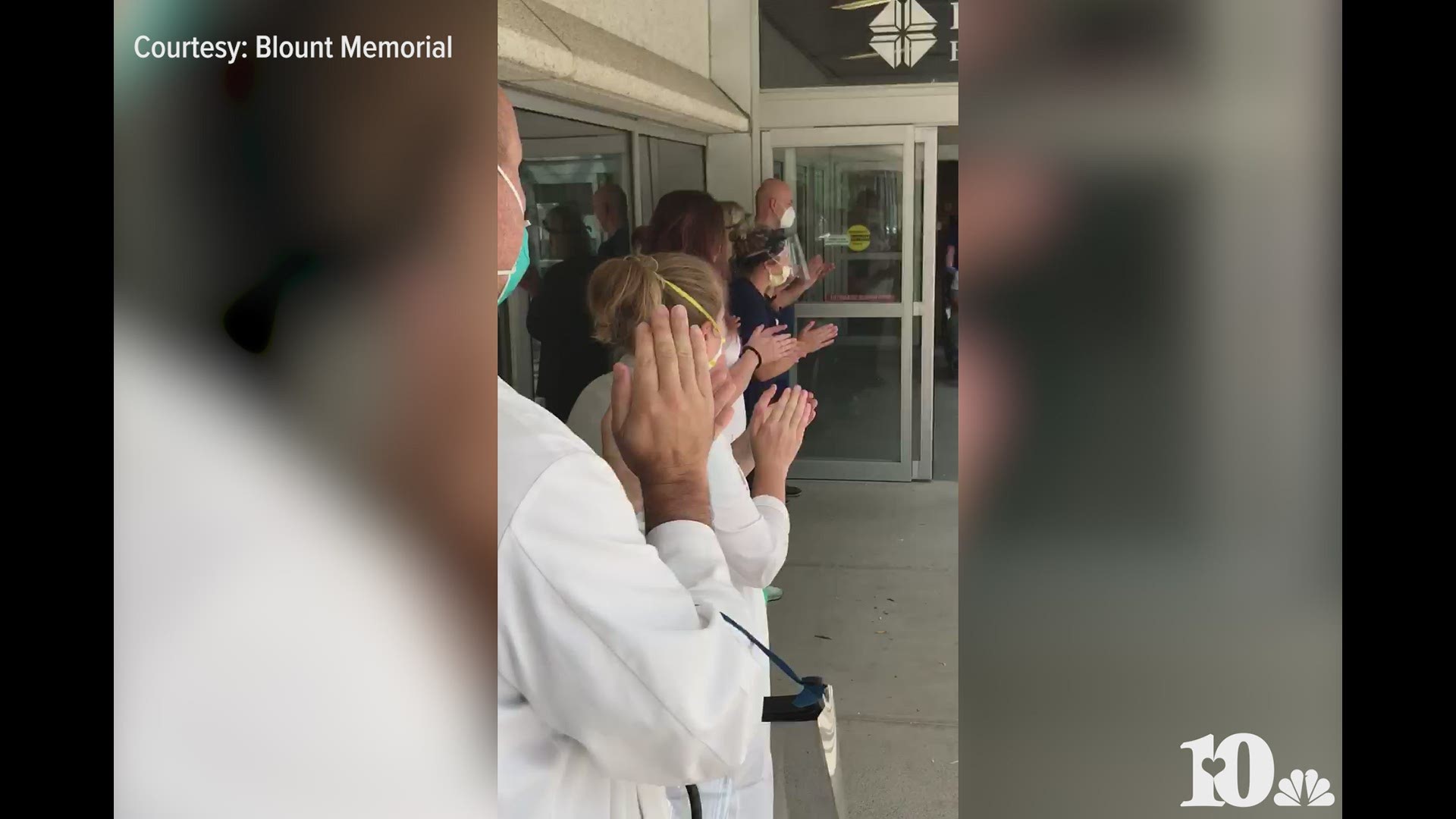BLOUNT COUNTY, Tenn. — Blount Memorial Hospital said its first COVID-19 patient to receive Remdesivir was able to leave the hospital and continue recovering at home on Thursday, June 4.
Hospital staff, including doctors, nurses and administrators, lined up to salute Greg Stephens as, for the first time in 11 days, he came face to face with his wife, Barbara, who hugged him and shared her appreciation to everyone involved in his care, according to a release from Blount Memorial.
Remdesivir is an experimental antiviral medication that has been shown to have activity against some viruses, including the coronavirus responsible for COVID-19.
“Coronaviruses duplicate by copying their genetic material using an enzyme known as the RNA-dependent RNA polymerase,” said Blount Memorial Hospital pharmacy director Rob Lucas. “Remdesivir blocks this enzyme and thus stops the virus from reproducing and making more copies of itself.”
Remdesivir was authorized by the United States Food and Drug Administration (FDA) for emergency use in patients with COVID-19 in May 2020. Blount Memorial contacted the Tennessee Department of Health to try to obtain Remdesivir for Stephens, who met the state’s criteria for use, according to the hospital.
“I’ve never been sick, and I’ve never been in the hospital,” Stephens said. “I have always been healthy.”
In fact, he said that as COVID-19 was developing and starting to spread, he had taken all the proper precautions as part of his daily routines.
“I was afraid of the unknown,” he said. “I was social distancing, and I was wearing a mask. I tried not to be too close to people at work – I was not just protecting myself, but I was protecting other people,” he said.
Stephens is the first patient at Blount Memorial Hospital to receive Remdesivir, and he’s the first patient to also receive it and convalescent plasma together, according to the hospital.
“Using both convalescent plasma and Remdesivir together seems to work well to target and eliminate the virus using two different mechanisms synergistically,” said Lucas.
“They began giving me that treatment through my I.V.,” Stephens said. “By that Wednesday, my temperature started dropping back down and I started feeling better. I could see myself improving. That was encouraging, and it kept my spirits up. I told myself I was going to be able to walk out of here,” Stephens added.
“Everything is a process and study,” said Stephens of being the first patient to receive both therapies. “We don’t really know what this actual disease is or its progression, but we’ve got to get it on the front end before it gets too far. If these treatments help me and people can look at my case and say ‘this worked for this guy,’ then they can also say ‘can somebody else benefit?’”
On Thursday, as Barbara Stephens gathered personal items from hospital staff, Greg got up and walked to their car – just as he said he would.
“I’m going to get back home, take a good long shower, and then go out on the back porch and look to the heavens and say thank you,” he said. “Then, I’m going to watch the birds go by and start to have a normal routine.”
“I believe in doing the right thing,” he said. “If you feel sick or you think you’re sick, go get tested, and then share that with people. Let them know something is going on or wrong. If we do this, we can get it on the front end – before it gets too far,” he added.

